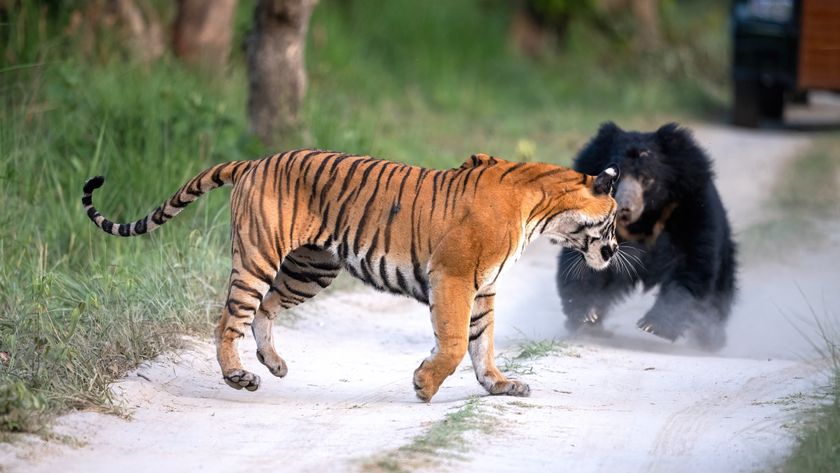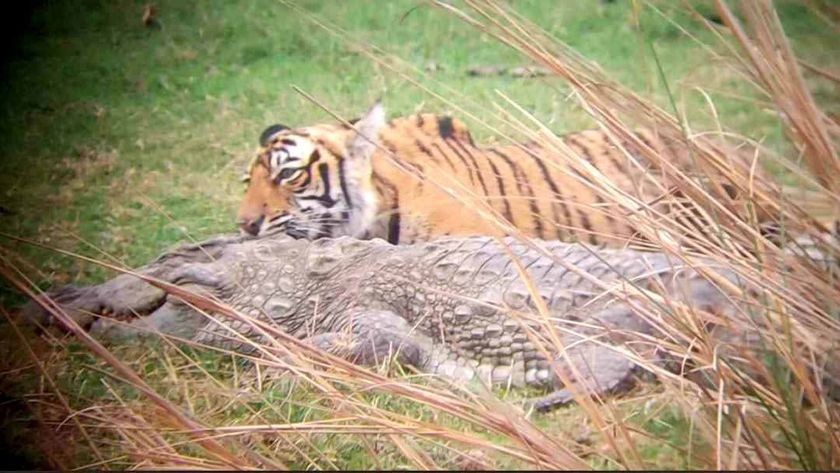Tigers Vanish in Nepal
Officials are alarmed by a plunging tiger population in the Suklaphanta Wildlife Reserve in Nepal, a refuge that once boasted among the highest densities of this endangered species in the Eastern Himalayas.
There were at least 20 tigers in the reserve in 2005 and now there are somewhere between six and 14, according to a World Wildlife Fund statement released today.
Poachers are suspected.
"The loss of tigers in Suklaphanta is undoubtedly linked to the powerful global mafia that controls illegal wildlife trade," said Jon Miceler, managing director of WWF's Eastern Himalayas Program. "The evidence suggests that Nepal's endangered tigers are increasingly vulnerable to this despicable trade that has already emptied several Indian tiger reserves — clearly, this is symptomatic of the larger tiger crisis in the region. We need a stronger, more sustained response to this issue in order to protect the future of tigers in the wild."
Suklaphanta shares a porous international border with India, officials note, allowing for easy and untraceable transportation of wildlife contraband. Unlike poaching of other species, such as rhinos where only the horns are removed, virtually no evidence remains at a tiger poaching site because all its parts are in high demand for illegal wildlife trade.
In May, however, two tiger skins and nearly 70 pounds of tiger bones were seized from the border town of Dhangadi, according to the WWF. And two separate raids last month recovered tiger bones being smuggled by local middlemen through the reserve.
Tiger populations are low elsewhere, too.
Sign up for the Live Science daily newsletter now
Get the world’s most fascinating discoveries delivered straight to your inbox.
"With only 4,000 tigers remaining in the wild, every tiger lost to poaching pushes this magnificent animal closer to extinction," said Sybille Klenzendorf, director of WWF's Species Conservation Program. "Tigers cannot be saved in small forest fragments when faced with a threat like illegal wildlife trade — this is a global problem that needs the concerted effort of governments, grassroots organizations and all concerned individuals."
Most poached tigers end up in China and Southeast Asia where they are used in traditional Chinese medicine, prized as symbols of wealth and served as exotic food.












